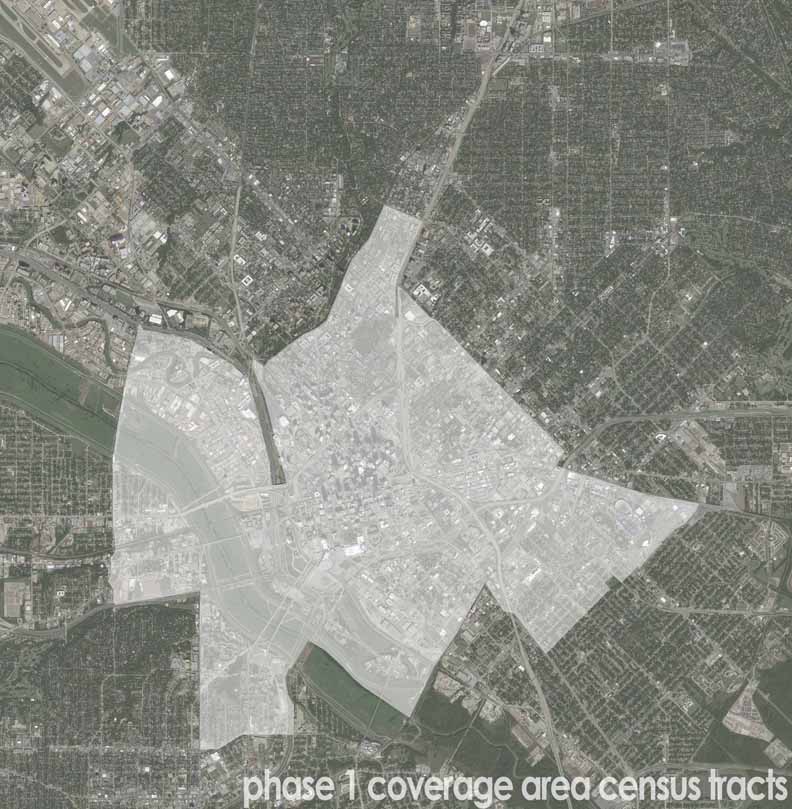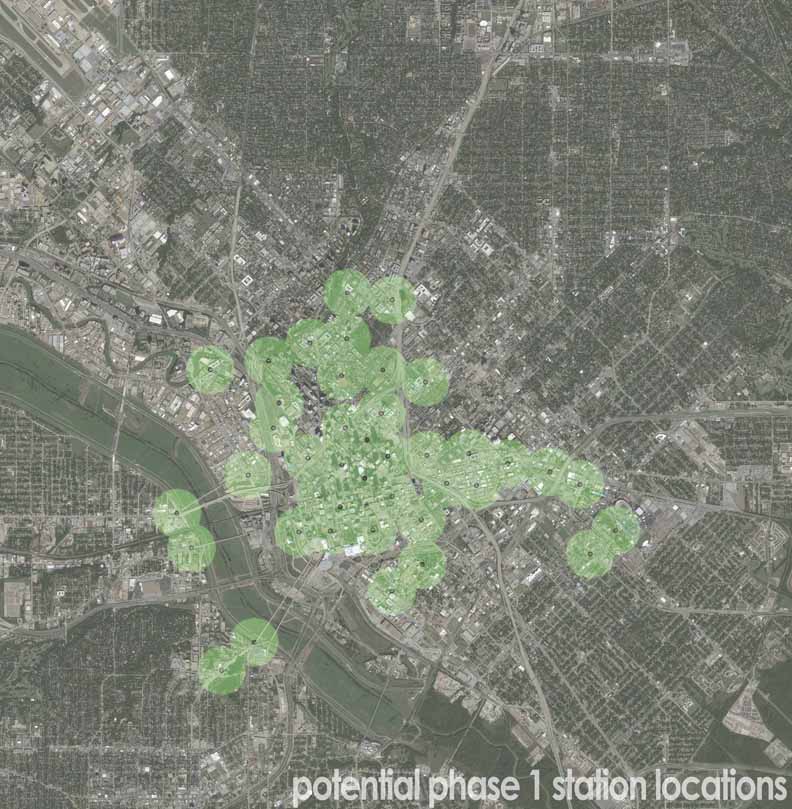
If you’ve been following the so-called Sharing Economy long enough you’re bound to find yourself debating the gray area between sharing and selling. More often than not the Car Sharing or Room Sharing services are social ways for capitalizing underutilized assets. Why own a car when it sits idle 96% of the time. Why have an extra bedroom when you use it for storage? Nothing is really shared about it.
On the other hand are the bike sharing systems sprouting up around the world. Around Texas even, as San Antonio, Austin, Houston, and Fort Worth all have operational systems. They’ve even had them long enough to expand them. Houston intends to have 100 stations and 1000 bikes by 2017. Until yesterday, Dallas had zero. 0. [About that competition of cities…]
Today, we have…I don’t even know, the article in the Morning News didn’t say. There are two stations at Fair Park. So twenty? As bike share systems tend to come in multiples of ten based on racks. Each rack usually holds 15 to 20 with the intent that there are always available spaces to park. Since ridership patterns tend to be asymmetric, staffers often spend much of their time redistributing bikes around to ensure availability (of both bikes and docks). New Yorkers often complain about
The asymmetry is due to land use patterns, people using bike share to commute from home to work. Implicated in that is the fundamental nature of bike share to be a success. 1) It’s in places of need – where people live and where they work 2) It gets people out of cars – meaning a healthier, energy and spatial efficient way to travel and 3) it is membership based. Making money is rarely a concern because the positive externalities are worth it. It is seen as an investment in transportation (for a decimal point for what the Trinity Toll Road is to cost) and increasingly it is seen as a necessary investment to attract college grads (at which Dallas is struggling).
The Dallas bike share system doesn’t do any of that. It’s for visitors to Fair Park to ride around a bit. And for that, it’s a great asset, but as Paul Sims pointed out on twitter that is bike rental. Not bike share. It is not transportation, but recreation. So we should call it that. The ambiguity could hurt the effort to scale the system up citywide.
What hurts the potential expansion of the system more is its pricing structure, which is rental-based rather than sharing-based. The Dallas system prices the first half hour the most, at $5 for 30 minutes. Then $2.50 each additional 30, punishing ridership while encouraging longer usage of the bike.
Successful bike share systems are membership-based. A typical member might sign-up for the service and pay an annual fee of say $79/year. Then, when they take out a bike, the first 30 minutes are typically free. This encourages people to sign-up and use the bikes (good thing), but then the rental pricing begins to kick in after that 30 minutes (because keeping the bikes out too long and unavailable for others to use is a bad thing to be discouraged through pricing).
When I first heard of this $125,000 bike share system, I tried to reach out to those organizing it to suggest they put the money into the pool for a larger bike share system that would serve the entire city. There was more interest in doing something than doing it well. Unfortunately, that seems to be Dallas’ modus operandi.
Trying to get out ahead of it, I put together a quick feasibility study to estimate the start-up and operations/maintenance costs of a 40 station roll-out. Since most studies tend to falsely promise profitability (and charge way too much and fill 100-pages with mostly filler), I used ridership numbers from existing systems in Texas to find the operating gap needed to maintain the system for 5 years.
To do so, I took the census tracts in the core where bike share would have the most benefit, where there are the most potential riders and the most potential destinations within a 1 to 3-mile ride.
I included all of the residents, all of the jobs, and all of the hotel rooms in the area and estimated the potential ridership based on density, land uses, and potential user.

I then took a crack at where those 40 stations might be best suited, prioritizing quarter mile spacing between stations so they’re not on top of one another but close enough to find additional stations if no bikes or open docks are available. This also ensures no stations are on an island disconnected from the rest of the system, which would inhibit ridership. I also prioritized DART stations, hotels, major employers, and parks.
My first attempt was a phased approach starting with 30 stations and then expanding to about 60 within three years. Working with some local leaders, we decided to change that to 40 stations at once to get larger coverage right away. The number and the locations aren’t as important for now as finding the dollar amount needed to be raised before getting to those details.
As you can see this was done before the helmet law was amended. Helmet kiosks would have added significantly to the costs while diminishing ridership and revenue.
This quick study found that it would take about $6M to launch a 40 station system from scratch. However, I decided there might be more creative ways to fill that gap by having station leases since (as we’re seeing downtown with the private bike share system sprout up) it is seen as an amenity that private entities are willing to pay for. If the station partners were to buy the rights to a station for the typical $50k per station that it takes to launch, then were to pay $10k annual fee to lease the station and help cover the maintenance and relocation costs, we could whittle the 5-year cost gap down to a shade over $2 million.
It’s worth noting that this analysis probably (hopefully) overestimates casual riders and underestimates long-term subscribers. New York’s citibike system has this problem. The annual riders don’t generate as much revenue per trip as the tourists. It’s been almost too successful, if that is such a thing. That’s a pricing problem, not the more fundamental network and infrastructure problems that we face. That can easily be calibrated. That it struggles from its own success is why it is a good public investment. The more people use it, the better for the city, even if it costs a couple million.
Whatever the cost it is still quite a bit less than the $1.6 billion that the Trinity Toll Road would cost and would have a far greater impact on transportation and the quality of life in the city. In the 21st century competition of cities, the rest are playing in the major leagues while we still figure out how tee-ball works. In cities, when transportation is just about movement and not about making the city better, then it is making both the city and transportation worse. Better city form and increased livability is the only proven solution to urban mobility challenges.








